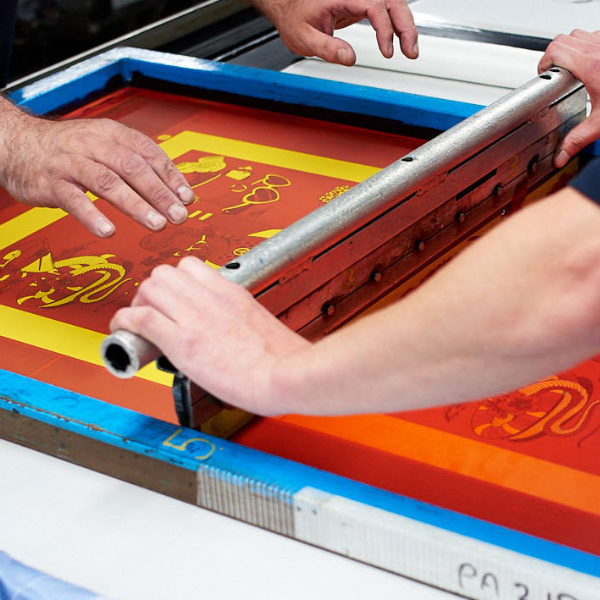Silkscreen (Printing Method)

Advantages of Silkscreen:
Silk screen printing t-shirt is a cost-effective method for printing larger quantities of t-shirts. Once the screens are set up, the silkscreen printing process can be repeated quickly and efficiently, reducing the cost per shirt.
|
Limitations of Silkscreen:
- Expensive for small orders
- Every color of printing requires a new screen. Therefore, every color of printing adds on to the start-up costs. Therefore, can get very expensive for complex design printing with many colors.
This method is most advantageous when:
- Your order quantity is high
- You have a tight deadline and need the apparel ASAP
- Design contains less than 4 solid colours
Cost of silk screen printing depends on:
- Number of colours
- Size of print
- Number of print positions
- Quantity of the order
Experience top-notch silk screen printing for T-shirts at The Athleisure Tees. Our silkscreen printing services deliver unparalleled quality and precision, ensuring your T-shirts make a lasting impression. Explore the artistry of silkscreen printing with us for a seamless blend of style and durability.
Elevate your T-shirts with our top-notch silk screen printing services. Our expert silkscreen printing ensures vibrant, durable designs on every tee. Choose us for quality and style in silk screen printing. Transform your wardrobe effortlessly!
Explore personalized style with our Silk Screen Printing T-Shirts. Elevate your wardrobe with precision and comfort. Our curated collection showcases the artistry of Silkscreen Printing, creating a unique statement in every shirt. Immerse yourself in creativity – shop now for the perfect fusion of fashion and personalized design. Silk Screen Printing T-Shirt: where style meets excellence.

